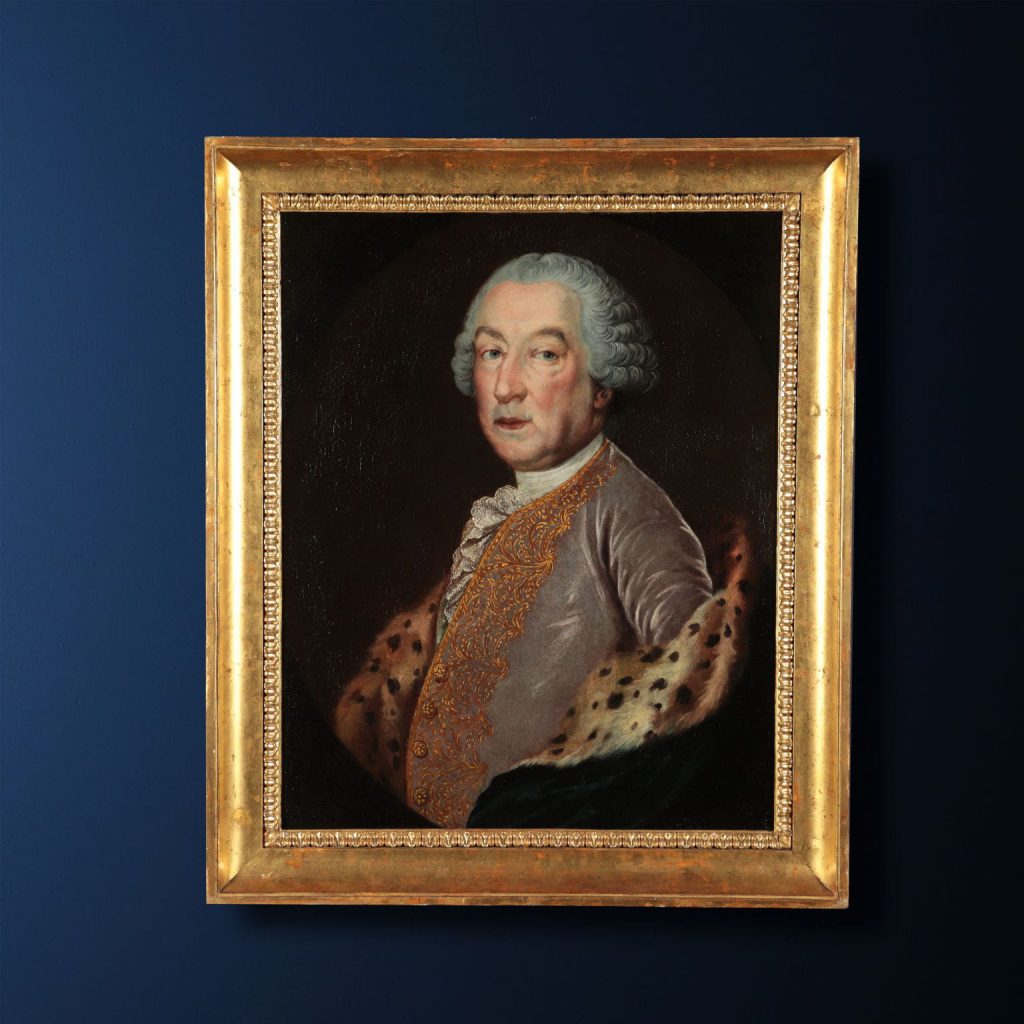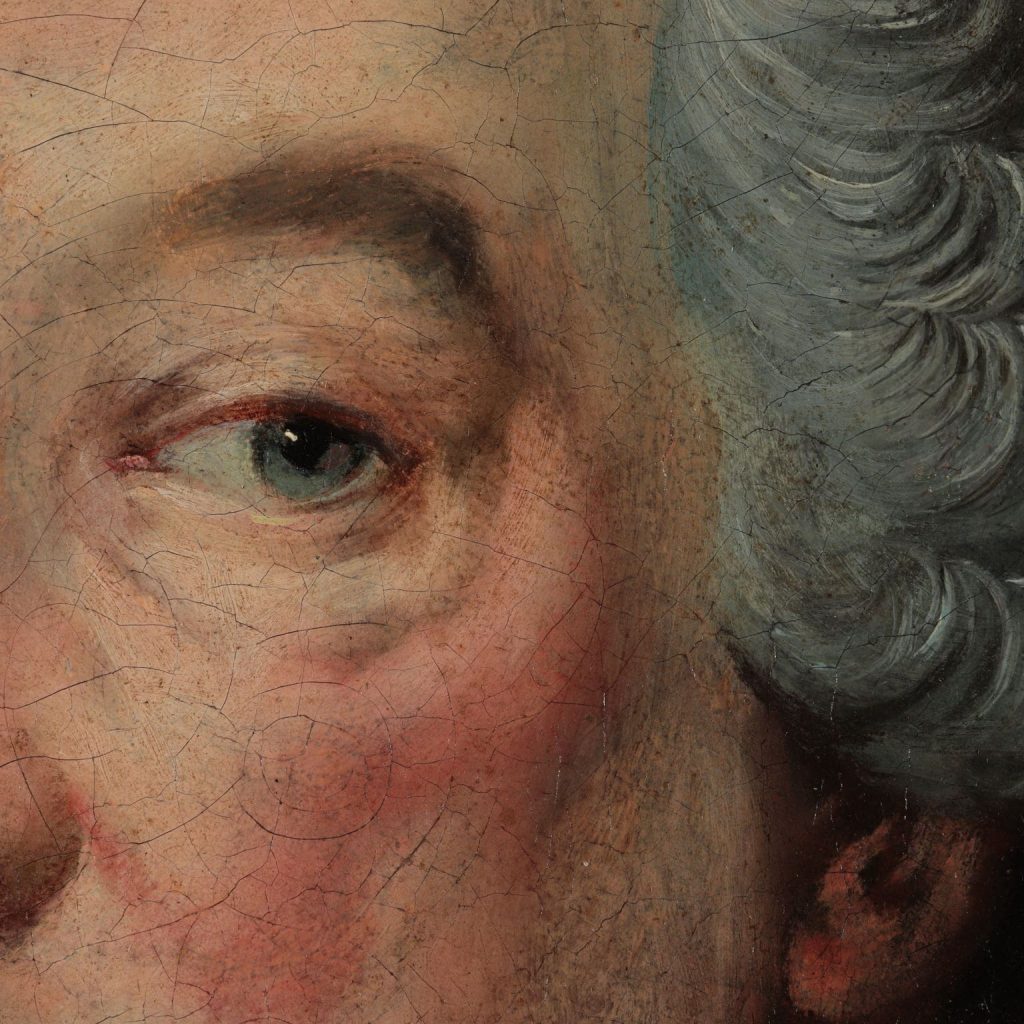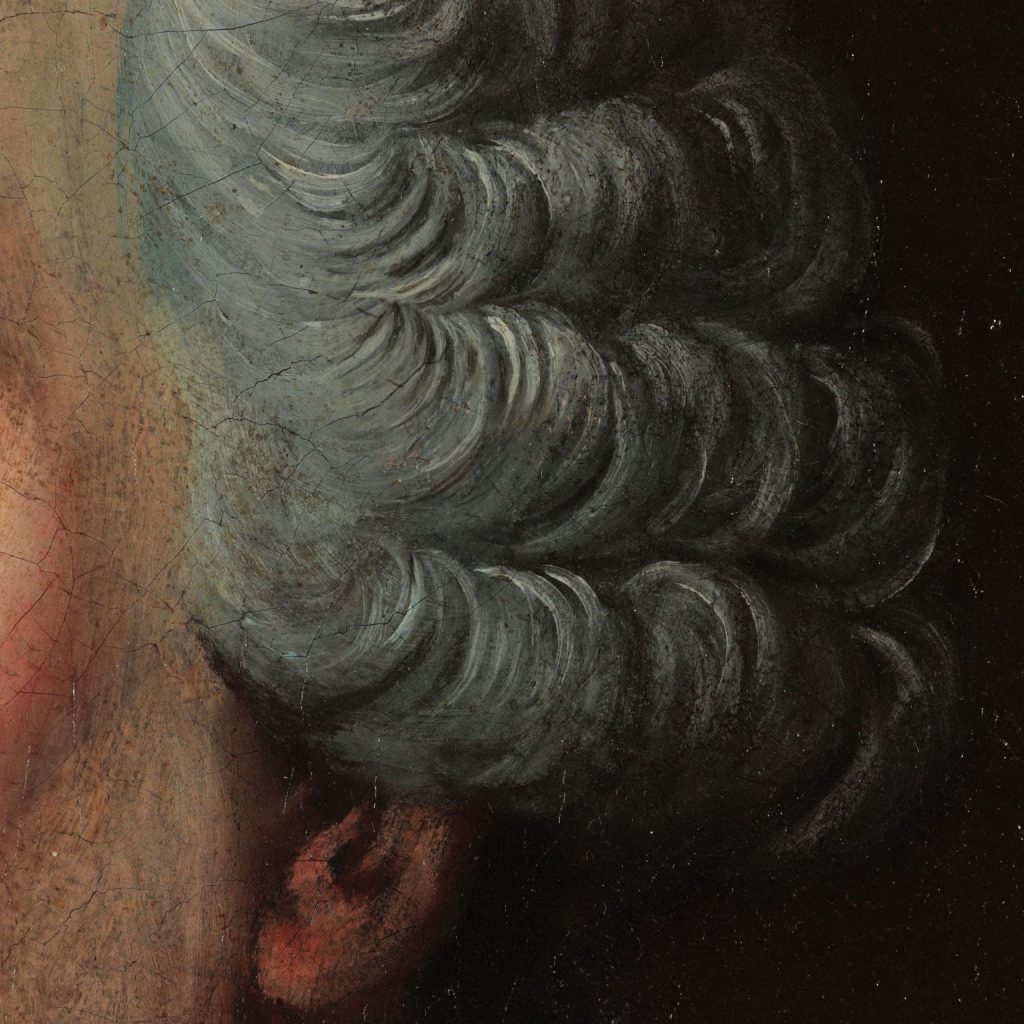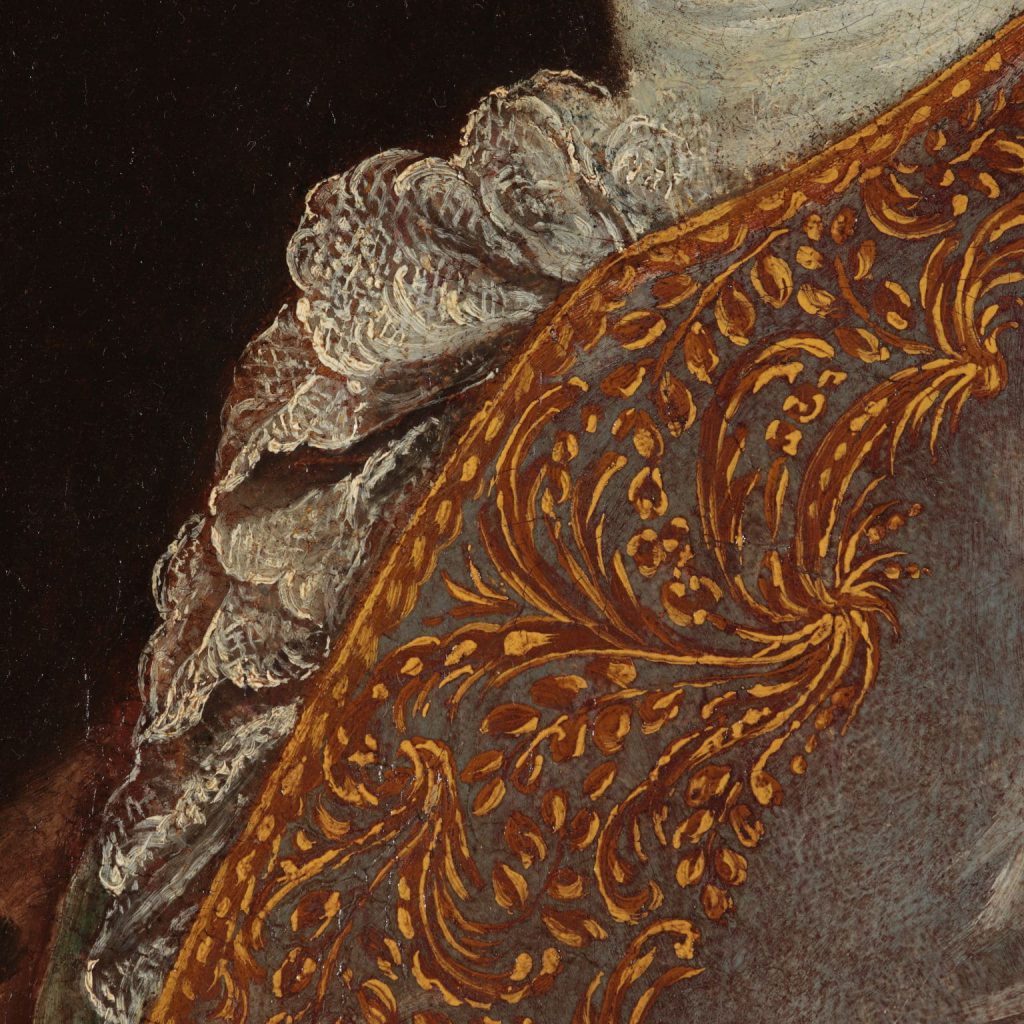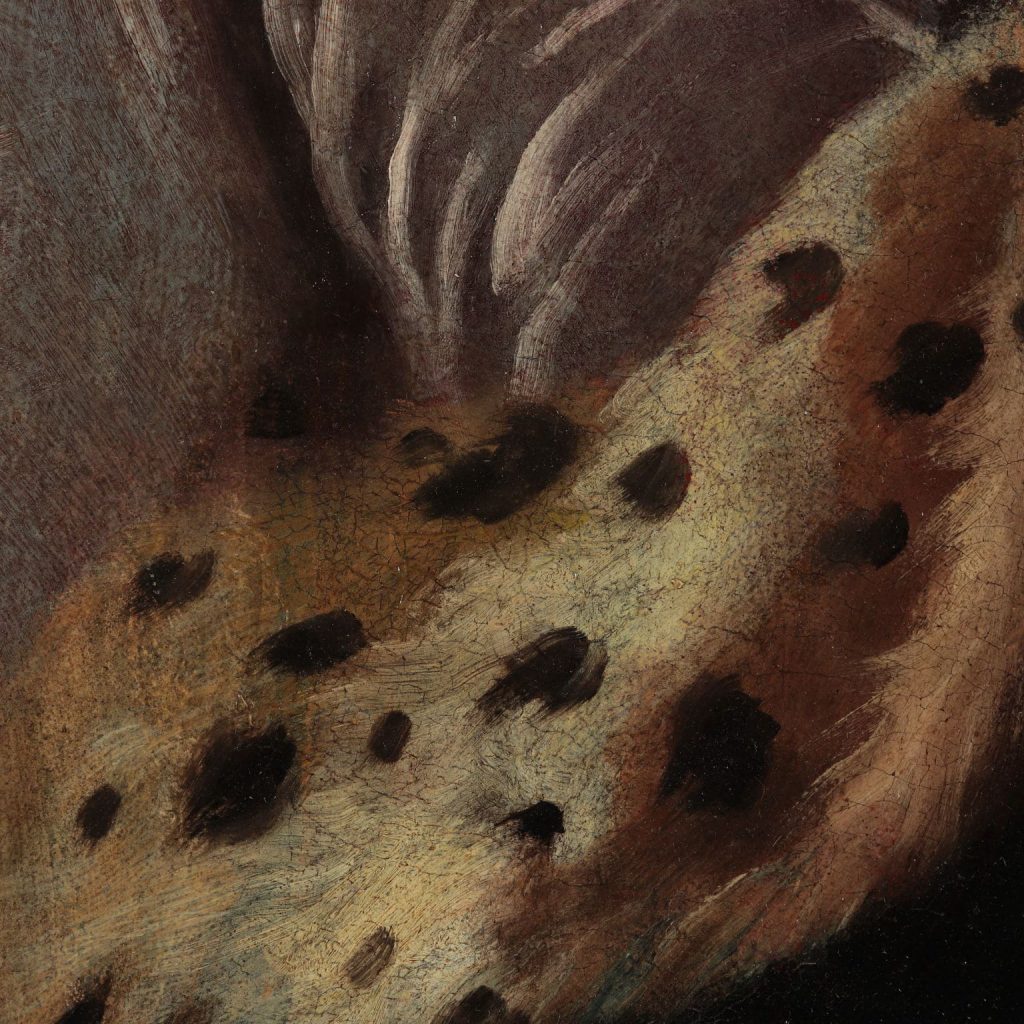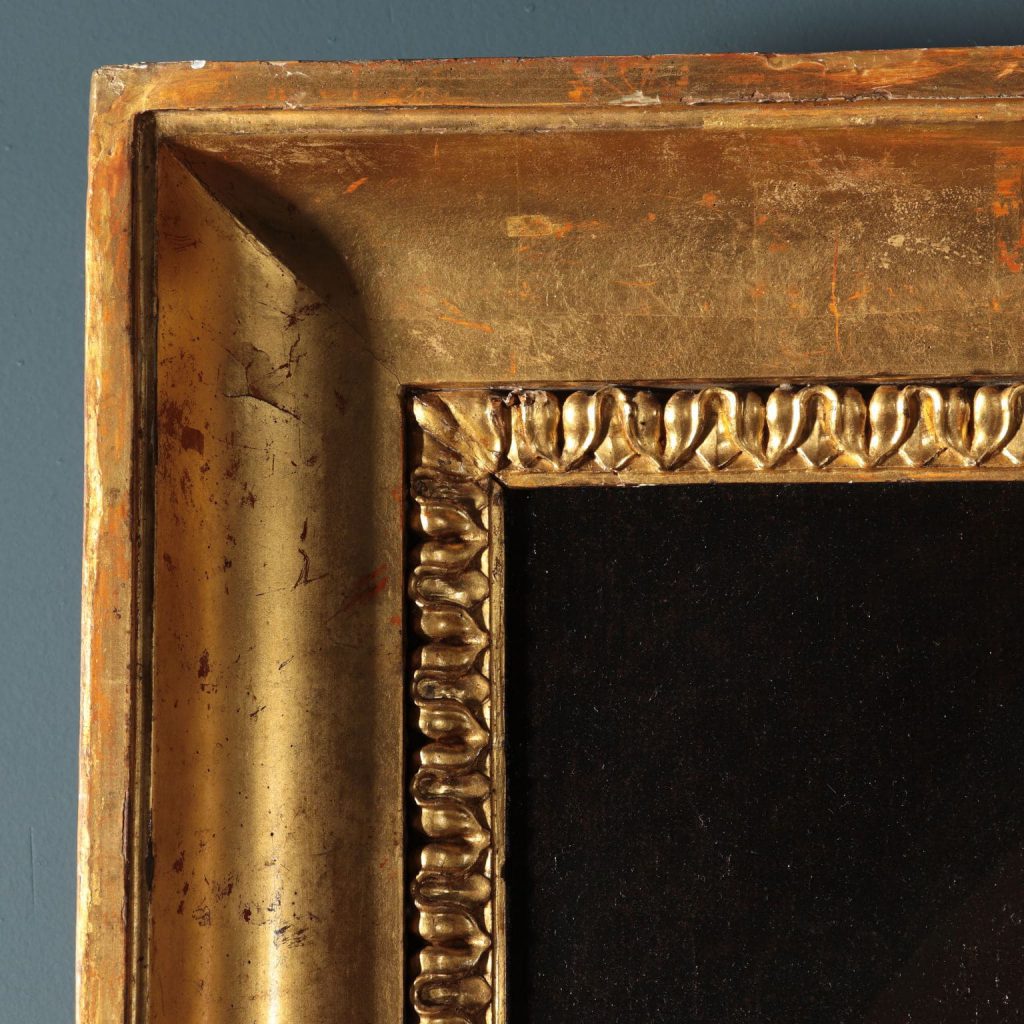Giacomo Ceruti (Milan 1698 - 1767)
Painting technique: Oil on canvas
Provenance: Imbersago, Orsini Falcò Pio Collection
Description:
This is the unpublished portrait of the Marquis Giulio Gregorio Orsini (1699-1773), painted by Giacomo Ceruti in 1755 and used as a model for the realization, that same year, of the equestrian portrait of the portrayed today in the Koelliker collection. This last painting, signed and dated 1755, is well known to the studies and also comes from the villa of Imbersago of the Orsini Falcò Pio family where, after 1918, the works already found in the Orsini palace in via Borgonuovo in Milan.
As evidence of the provenance from this collection, there is a late nineteenth-century cartouche on the back of the frame which specifies, with a significant imprecision, the name of the portrayed: “Prince Pio Caballiero of the Orsini family of Rome”. In fact, it is not a generic “Prince Pio” of the Orsini family of Rome but, as evidenced by the palmar resemblance to the Portrait, it is Giulio Gregorio Orsini of Rome, superintendent of the urban militia of Milan since 1755, whose assets flowed, on the death of his son Egidio Gregorio (1736-1819), in those of the family of the Falcò Pio princes – first at the Milanese palace and then, after 1918, at the villa of Imbersago.
Giacomo Ceruti, Portrait of Giulio Gregorio Orsini, General Superintendent of the Urban Militia, 1755, Milan, Koelliker Collection
As a distinctive style of Ceruti, the ability to render the colors and details of the dress is emphasized: the noble appears as a figure, sheathed in the elegant tailcoat embellished with yellow-gold embroidery along the edges and the lace of the jabot of the shirt; well underlined is the spotted fur collar of the cloak that wraps it down from the shoulders. Even in the drafting of the facial features, the bright and vibrant tones of the pink complexion, the expressive blue eyes, the red mouth and the firm cut stand out.
The painting, originally oval, was brought to its current rectangular format with the addition of corners at the beginning of the nineteenth century, when it was inserted into the gilded frame in which it still stands.
Dimensions: 72 x 57,5 cm ( 28,3 x 22,6 in )
CODE: ARTPIT0001006
Giacomo Ceruti Biography:
Born in Milan from his father artist, Giacomo Ceruti, from the early twenties of the 1700s he began to work and distinguish himself artistically in Brescia, where he earned the nickname of “Pitocchetto” for the pictorial genre that had the poor, the outcasts as its main subjects. , the vagabonds, the peasants (the beggars, in fact) but also the “real faces” of the notables and prelates, of the representatives of the small Lombard aristocracy: depicted in large format paintings and filmed with documentary style and with a spirit of human empathy , earned the artist a leading role in the pictorial panorama representing that vein of “reality painting” which had a centuries-old tradition in Lombardy (think of Vincenzo Foppa, the Brescia school around Moretto and Savoldo).
The first work of his certain attribution, the Portrait of Count Giovanni Maria Fenaroli, from 1724, is from this period in Brescia, which expresses his portraiture concept well.
In 1736 Ceruti moved to Venice, as a guest for a few months of Marshal Matthias von der Schulenburg, who commissioned him several works depicting beggars, portraits, landscapes and still lifes. His stay in Veneto, and in particular his relationship with Schulenburg, offered him the opportunity to get in touch with an international and up-to-date environment and to expand his production.
The commissions obtained in those years gave him the opportunity to acquire and master stylistic and compositional tools such as to allow him an activity as a “history” painter, more profitable and of wider resonance, conducted in parallel with the practice of portrait and scene of genus.
The artist then resided in Padua between 1737 and 1738, where he worked for the basilica of the Saint.
He later returned to Milan, where his presence is documented in the three years from 1742 to 1745 and, after a stay in Piacenza, for the whole subsequent period, until his death.
The portrait proposed is also stylistically part of the production of the portraitist Ceruti of the Milanese aristocracy during the fifth and sixth decade of the 1700s.
In this period his propensity for reality painting was more in tune with the elegant and precious painting of international portrait painters such as Liotard or Gainsborough, combining his taste for truth and reality with the accuracy in the representation of the rich details of ‘clothing.
This production also includes a painting very similar to ours, in the layout and in the ductus, the Portrait of a young gentleman from Casa Visconti di Saliceto (published by Mina Gregori and exhibited in 1967 at the Turin exhibition Giacomo Ceruti and the portraiture of his time in northern Italy).
His last known work dates back to June 1767. The artist died two months later, on 28 August 1767, at the age of 68, in Milan, in the parish of San Simpliciano where he had been living for some time.
Bibliography:
– L. Mallè, G. Testori (edited by), Giacomo Ceruti e la ritrattistica del suo tempo nell’Italia settentrionale, Torino, Impronta, 1967, p.49 n. 24 bis, tav. 9
– M. Gregori, Giacomo Ceruti, Cinisello Balsamo, Pizzi, 1982, p. 403, 473
– F. Frangi, A. Morandotti (edited by) Maestri del ‘600 e del ‘700 lombardo nella collezione Koelliker, Milano, Mazzotta, 2006, p. 184 e sgg.
- Portrait of Giulio Gregorio Orsini, Giacomo Ceruti, 1755

Antiques, Art and Design
FineArt is the new ambitious Di Mano in Mano project that offers an exclusive choice of antiques and design works, presenting them for their singularity and uniqueness.

